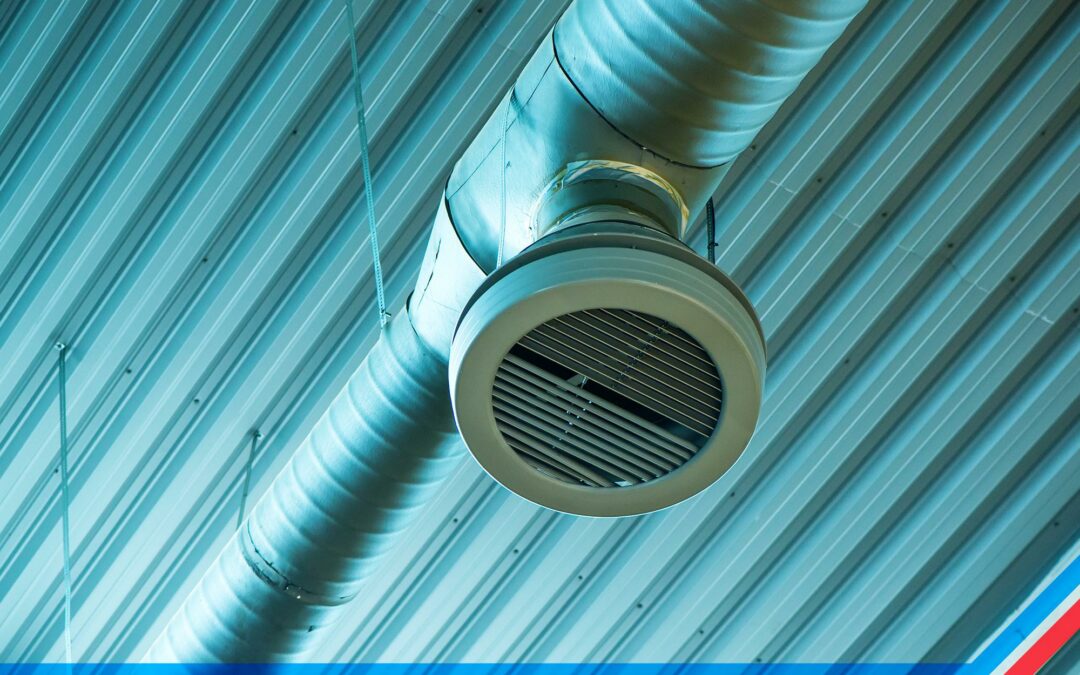Because air conditioning and heat are so important for the comfort of your employees, staff, and anyone else spending time in your commercial building, you want to install an HVAC system that will do its heating and cooling job well. When you have to get an HVAC system installed in a new construction build or replaced in your current commercial building, there are some choices that must be made.
One of the biggest decisions is what type of commercial HVAC system you should purchase. There are a lot of options and variations out there, but they fall into three main categories: single split systems, multi split systems, and VRF / VRV systems. Which type of system you need depends on a number of factors. To help you figure out which commercial HVAC system is right for you, here are the differences between each type of system and the advantages and disadvantages of each.
Single Split HVAC Systems
Single split HVAC systems are great for small commercial spaces, such as small offices, small shops, cafes, and server rooms. For larger spaces, multiple single split systems can work together to heat and cool the area. Single split systems are a popular choice among business owners because they are more affordable and take up less space when compared to some of the other commercial HVAC options.
A single split system typically consists of an air conditioner, a furnace, an evaporator coil, and refrigerant. These components work together to either heat or cool air and then circulate it around the area via ducts. You can control the system using a thermostat or control panel.
Advantages:
- Single split systems are less expensive to install than a central system.
- Each unit is self-contained, so if one breaks down, the rest can remain functional.
Disadvantages:
- An outdoor unit is required for each indoor unit, which can take up a lot of space outdoors if your commercial area needs multiple units.
Multi Split HVAC Systems
Multi split HVAC systems are very similar to single split systems, but unlike single split systems, they allow up to nine indoor units to connect to a single larger outdoor unit. This type of commercial HVAC system is great for medium-sized spaces that have a lot of walls or multiple floors, such as larger office spaces, doctors’ offices, restaurants, and retail shops.
A multi split system reduces energy consumption by using sensors that detect small changes in temperature, allowing the HVAC system to make small adjustments as necessary. Instead of traditional furnaces, multi split systems use heat pumps, which save money and energy by working with heat’s natural tendency to move from warm to cool areas.
Advantages:
- Fewer outdoor units take up less space and preserve your commercial building’s outdoor appearance.
- Air conditioning units can be mounted on both the wall and ceiling, and you can use an air curtain over entrances.
Disadvantages:
- Multi split systems require more complex ductwork, which means installation may take more time and will be more expensive.
VRF / VRV HVAC Systems
Variable Refrigerant Flow (VRF) and Variable Refrigerant Volume (VRV) are two names for the same type of commercial HVAC system, and they can be used interchangeably. This type of HVAC system is best for medium to large commercial spaces, such as large office spaces, hotels, retail stores, and mixed-use buildings. These systems are known for their reliability, efficiency, and flexibility.
VRF / VRV systems can be either heat pump or heat recovery systems. A heat pump system can either heat or cool a commercial building and is a good choice for open floorplans. It uses refrigerant in the heating and cooling lines, with one evaporator connecting to a single condensing unit. A heat recovery system can provide both heating and cooling at the same time, which is ideal for buildings that have multiple smaller rooms, especially if they need to be at different temperatures. Heat recovery systems do this by taking waste heat from other parts of the building and using it to heat other areas and even hot water.
Advantages:
- VRF / VRV commercial HVAC systems can provide heating and cooling to larger buildings.
- These systems are efficient, reliable, and easy to control.
- It does not take long to install VRF / VRV HVAC systems, so your daily operations will not be majorly affected during the installation process.
- Heat recovery systems offer a lot of flexibility for heating and cooling your commercial building.
Disadvantages:
- VRF / VRV commercial HVAC systems are more expensive to purchase and have higher installation costs than other systems.
- A backup condenser may be necessary for larger commercial buildings in case the outside unit fails.
Commercial HVAC Installation, Repair, and Maintenance in East Tennessee
Many things must be considered when it comes to installing a new commercial HVAC system. There are a number of variations in systems even within each of the three categories mentioned above, so it is best to enlist the help of an HVAC professional when you need a new commercial HVAC system. A trained HVAC professional can help you figure out the type of system that will work best for your commercial space based on its size, layout, purpose, etc.
Whether you need a commercial HVAC system installed in a new construction or your old HVAC system needs to be replaced, City Heating and Air Conditioning can help. Our HVAC experts can determine the right type and size of commercial HVAC system for your space then properly install it. We also provide routine maintenance and repair services on your HVAC systems to make sure they are always working as efficiently as possible. For over 50 years, City Heating and Air Conditioning has been entrusted by East Tennesseans to provide honest and dependable heating and cooling services. Reach out to us today at 865-938-1005 or online to get the best heating and cooling services in Knoxville, TN.

